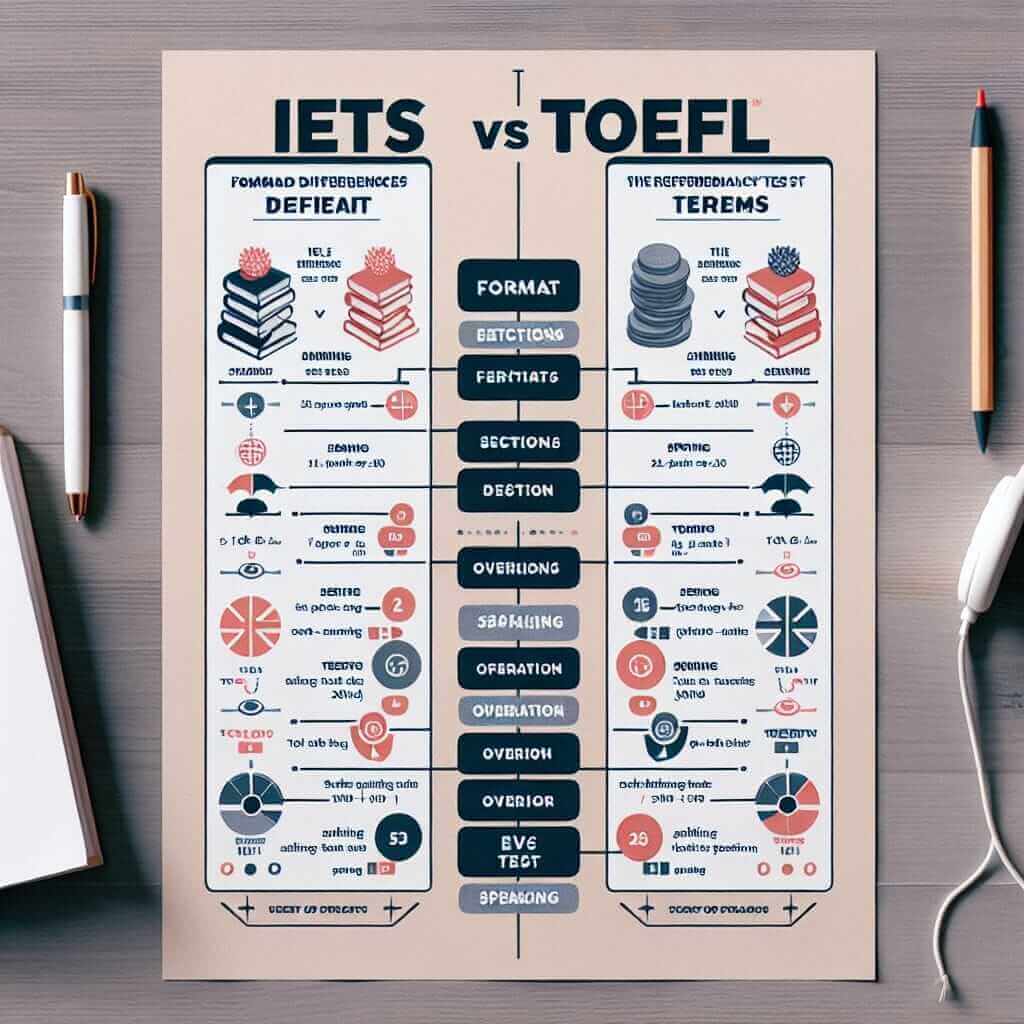Introduction
As an IELTS instructor with over 20 years of experience, I often encounter students struggling to decide between IELTS and TOEFL. Both exams assess English language proficiency for non-native speakers, but their differences extend beyond accents and formats. Understanding these distinctions is crucial for choosing the test that best aligns with your strengths and academic/professional goals. This article delves into the core disparities between IELTS and TOEFL to empower you to make an informed decision.
IELTS vs TOEFL: Unpacking the Key Differences
1. Exam Purpose and Recognition
While both exams evaluate English language skills, their intended purposes differ slightly:
-
IELTS (International English Language Testing System): Primarily designed for UK, Australian, Canadian, and New Zealand universities and immigration. IELTS is also widely accepted in other English-speaking countries. It focuses on practical communication skills needed for academic and everyday life scenarios.
-
TOEFL (Test of English as a Foreign Language): Primarily designed for North American universities and institutions. It places a stronger emphasis on academic English and comprehension within a university setting.
2. Exam Format and Content
The two exams diverge significantly in their format and content delivery:
IELTS:
- Format: Available in two formats – Academic and General Training. The Academic format is for higher education and professional registration, while the General Training format is for work experience, training programs, and migration.
- Sections: Listening, Reading, Writing, and Speaking.
- Duration: Approximately 2 hours and 45 minutes.
- Speaking Test: Conducted face-to-face with a certified examiner.
TOEFL:
- Format: Primarily internet-based (TOEFL iBT).
- Sections: Reading, Listening, Speaking, and Writing (integrated with other sections).
- Duration: Approximately 4 hours.
- Speaking Test: Responses recorded and evaluated later by multiple examiners.

3. Scoring System
Both exams employ different scoring scales:
IELTS: Band score ranging from 0 to 9, with 9 being the highest (expert user).
TOEFL: Total score ranging from 0 to 120, with individual section scores from 0 to 30.
4. English Accents and Content
-
IELTS: Employs a variety of native English accents (British, American, Australian, etc.) reflecting the international nature of the test. Content covers a broader range of topics, from everyday life to academic subjects.
-
TOEFL: Predominantly features North American accents. Content is heavily focused on academic subjects and university-level materials.
Choosing the Right Exam: Factors to Consider
- Academic/Professional Goals: Determine if your target institution or organization has a preference for IELTS or TOEFL.
- English Proficiency Level: Take a practice test of both exams to identify which aligns better with your current language skills.
- Personal Preferences: Consider your comfort level with different test formats and accent familiarity. For instance, if you’re more comfortable with face-to-face interactions, IELTS might be more suitable.
Conclusion
Choosing between IELTS and TOEFL is a significant decision in your English language learning journey. By understanding the key differences outlined in this article, you can make an informed choice that best serves your academic or professional aspirations. Remember to research thoroughly, leverage available resources, and most importantly, believe in your abilities.